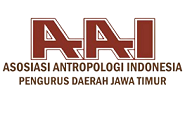Guide for Authors Online Submission Privacy Statement Manuscript Template Cover Letter and CTA Template
Author Guidelines
Guidelines for authors_____________________________
Each manuscript should be prepared according to the guidelines compiled below and also available on the Internet. Manuscripts and illustrations not prepared in the correct format will be returned to the authors for corrections prior to being sent out for review. This article has been clear for dispute and no issue for authorship.
We accept online submissions. Please click this link for online submission, and you will be able to deposit your manuscript--submission and revision, as well as raw data for supplementary file-- through this link: online submissions.
This journal accepts original articles and review articles.
Manuscripts should be submitted as a single file not exceeding 5 MB (text, tables and figures all together in one file). Include the full name(s) of author(s), correspondence address, e-mail address, phone, and fax numbers. Some supplementary documents that must be considered and completed in the Online Submission (Uploaded as a Supplementary File) are the original signed Copyright Transfer Agreement (CTA) form and the original signed Cover Letter form [Download].
Manuscripts should be written in English. Authors whose mother tongue is not English should have the manuscript translated by a professional translator or checked by a native English speaker prior to submission. Use one spelling style throughout the entire manuscript (Example: colour, palaeoanthropology and metre in British English or color, paleoanthropology and meter in American English).
Writing Format for Submission
Typing (in Times or Times New Roman for English language, font size 11) must be in 1 line spacing (with after spacing in 6pt), justify, unjustified margins at the right. First paragraph line indented 0.5 cm, reference list pendant 0.5 cm. Running title with maximum of 10 words. No footnotes are allowed in text.
Title and chapter headings in larger font, bold face, sub-chapter headings in bold and smaller than title and chapter headings (all in normal face not in italics). Use separate line for each chapter or sub-chapter heading. Do not number the chapters or sub-chapters. Use italics for species, genus names, medical terms in Latin or, however as rarely as possible, for stressing a particular fragment.
Submit a manuscript without any unnecessary or hidden formatting.
Writing Format for Research Report or Literature Review
Abstract:
The abstract briefly presents the objectives of the study, major results and conclusions in a language as non-technical as possible. It should not exceed 200 words. Authors whose mother tongue is not English are invited to add an abstract of similar length in their own language. If it requires special characters, it should be submitted in both RTF and PDF versions to ensure the correct reproduction of special characters.
The text:
The main portion of the manuscript should be divided into sections such as e.g.: Introduction, Materials and Methods (or Materials, Methods; specifically for research report), Results and Discussion, Conclusion followed by Acknowledgements and References. Chapters which reflect topics of the manuscript are welcome, too. The sections can be divided into sub-sections but the use of numerous sub-sections should be avoided.
Avoid dot points and numbering such as:
1. .........
2. .........
It should be written as: 1) ............, 2) ............
Tables should be printed with a concise explanatory caption above the table and each column should carry a separate heading. Additional explanations (such as of abbreviations) should be given. In the table format only horizontal lines need to be used and the number of these should be kept to a minimum. Do not use gridlines automatically provided by some programmes. Normally, tables must fit on the A4 page. Figures and tables should always be referred to in the text.
References to the literature:
In-text:
Should be by the author's surname only with the year of publication in brackets. Where there are two authors the names should be linked by ‘‘and”. Where there are more than two authors the reference should be quoted - first author followed by ‘‘et al.'' (not in italics). If references are given in brackets the author's surname and the year of publication should be separated by a comma. If there is more than one reference of the same author, years of publication should be separated by commas. References of the same author that appeared in the same year should be indicated by first letters of the alphabet and separated by commas. References to publications of different authors should be separated by semicolons. Citations may be made directly (or parenthetically). If many references are listed, they should appear first in alphabetical order of authors surnames and then by the ascending year of publication. The reference style that IJSS uses is the American Journal of Physical Anthropology.
Examples:
...... (Jablonski & Chaplin, 2000).
...... (Snow, 1986).
As indicated by (Lovallo, 2005) ....;
Rahardjo & Setiani (2013, p. 148) studied .....
...... (Glinka, 1984a, 1984b, 1984c).
...were studied (Glinka, 1984a, 1984b; Jablonski & Chaplin, 2000).
In section References:
The references at the end of the manuscript should be listed in alphabetical order under the first author's name and then further sorted chronologically if necessary. More than one reference from the same author(s) in the same year must be identified by the letters "a", "b", "c", etc., placed after the year of publication All names of the authors of the referred paper should be included. Only works referred to in the text should be included in the list. Titles of the journals should be abbreviated (use the abbreviated form officially accepted by given journal or, as it appears in Current Contents, Medline or any other major literature search).
Examples:
References
Glinka, J. (1984a). Analisis Faktorial Ciri-Ciri Metris Penduduk Pulau Palue. Berkala Ilmu Kedokteran, 16, 135–143.
Glinka, J. (1984b). Karakteristik Anthropometrik Penduduk Pulau Palue. Berkala Ilmu Kedokteran, 16, 77–83.
Glinka, J. (1984c). Ontogenetyczne badania dzieci i mlodziezy na wyspie Flores w Indonezji. Przegl Antropol, 50, 269–275.
Jablonski, N. G., & Chaplin, G. (2000). The evolution of human skin coloration. Journal of Human Evolution, 39(1), 57–106. https://doi.org/10.1006/jhev.2000.0403
Lovallo, W. R. (2005). Sress & Health: Biological and Psychological Interaction (Second). USA: SAGE Publication.
Rahardjo, W., & Setiani, Y. (2013). Computer Anxiety, Academic Stress, and Academic Procrastination on College Students. Journal of Education and Learning, 7(3), 147–152.
Snow, M. H. L. (1986). Control of embryonic growth rate and fetal size in mammals. In F. Falkner & J. M. Tanner (Eds.), Human Growth Volume 1 (2nd editio, pp. 67–82). New York: Plenum Press.
How to cite the references:
Journal:
Scruton, R. (1996). The eclipse of listening. The New Criterion, 15(3), 5-13.
Book:
Calfee, R. C., & Valencia, R. R. (1991). APA guide to preparing manuscripts for journal publication.Washington, DC: American Psychological Association.
Edited Book:
Plath, S. (2000). The unabridged journals. K. V. Kukil (Ed.). New York, NY: Anchor.
Paper Presentation:
Weiss, A., & McGarrell, E. F. (1996, November). The impact of increased traffic enforcement on crime. Paper presented at the annual meeting of the American Society of Criminology, Chicago, IL.
Symposium:
Muellbauer, J. (2007, September). Housing, credit, and consumer expenditure. In S. C. Ludvigson (Chair), Housing and consumer behavior. Symposium conducted at the meeting of the Federal Reserve Bank of Kansas City, Jackson Hole, WY.
Conference paper abstract retrieved online:
Liu, S. (2005, May). Defending against business crises with the help of intelligent agent based early warning solutions. Paper presented at the Seventh International Conference on Enterprise Information Systems, Miami, FL. Abstract retrieved from http://www.iceis.org/iceis2005/abstracts_2005.htm
Proceedings published in book form:
Katz, I., Gabayan, K., & Aghajan, H. (2007). A multi-touch surface using multiple cameras. In J. Blanc-Talon, W. Philips, D. Popescu, & P. Scheunders (Eds.), Lecture Notes in Computer Science: Vol. 4678. Advanced Concepts for Intelligent Vision Systems (pp. 97–108). Berlin, Germany: Springer-Verlag. doi:10.1007/978-3-540-74607-2
Thesis/Dissertation:
Schnittker, J. (2004). Education and the changing shape of the income gradient in health (Unpublished doctoral dissertation or master's thesis). Name of Institution, Location.
Report:
Muthen, L. K., & Muthen, B. O. (2004). Child care and child development (Report No. xxx). Los Angeles, CA: Publisher.
Patent:
Smith I. M. (2011). U. S. Patent No. 235,445. Location: Publisher.
More complete guidelines can be found in http://e-journal.unair.ac.id/ijss





















